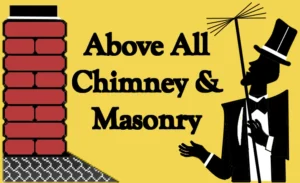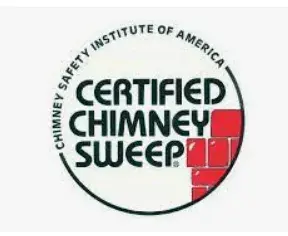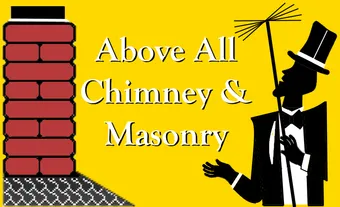General Questions
The fireplace is your escape from the worries of the world. Problems seem to melt away when sitting by a roaring fire as the warming glow and crackling fire help clear your mind. Yet, what happens when your escape begins to smell? Well, there are several reasons a fireplace will begin to emit unpleasant odors. With proper care and regularly scheduled maintenance, you can avoid having your escape turn into a smelly nightmare!
Water Intrusion
A primary cause of odor being emitted from your fireplace is moisture. If not adequately capped, rainwater can make its way into your chimney. This will eventually lead to that “musky” smell you find from areas with continued exposure to water. In addition to causing an unpleasant odor, water entering your chimney can cause the premature failure of your damper due to rust and damage to the flue lining. These issues are costly to repair compared to the expense of adding a chimney cap to prevent moisture. Another source of water intrusion is humidity. You may notice the smells more on humid days.
Build-up of Soot and Creosote
“Soot” and creosote are a result of chemical processes that take place when you burn wood. Excess creosote in the chimney will cause an odor similar to hot asphalt in the summer or a poorly maintained barbeque — the more moisture contained in the wood, the higher likelihood of creosote formation in your chimney. It is impossible to remove the possibility of some creosote and soot deposits in your chimney. Annual cleanings and burning the proper wood will significantly reduce the build-up of creosote in your chimney. During an annual cleaning, a chimney sweep will remove creosote, and by burning well-seasoned firewood, you can reduce the chances of severe creosote formation.
Wildlife Infestation
If your chimney lacks a wire mesh netting system at the furthermost exhaust point, some wildlife may make your chimney it’s home. And noxious odors may result from animal droppings, or in a worst-case scenario, an animal became trapped and died in your chimney, causing an especially noxious smell. You must always use caution when dealing with any wild animal.
If you suspect an animal is in your chimney, please contact a wildlife control service first. Our company is not certified to remove living animals from chimneys. We will, however, come to clean the chimney of debris and provide a chimney cap.
Differences in Air Pressure
Another culprit of bad smells from your chimney may be the result of negative air pressure. Typically occurring during the summer season, when a homeowner makes improvements like weatherizing, new windows, new roofing, or new exhaust fans, it often leads to “over-sealing” the home. Due to a successful sealing, unnoticed odors that generally exist in your chimney creep back into the home rather than exiting through the exhaust. Although a common issue, it can quickly be resolved by keeping the damper closed while the fireplace is not being used. If your damper is older, new seals may be needed to correct the problem of odors fully.
Schedule Maintenance With Above All Chimney & Masonry to Keep Your Home Odor Free!
Regularly scheduled maintenance and making any necessary repairs is a great way to avoid the chances of your home being invaded by unpleasant smells coming from the chimney. With the services of Above All Chimney & Masonry, you can be assured that your fireplace will remain your warm escape not become a smelly headache! For more information about our chimney cleaning and repair services, contact us today.
Anyone with a chimney knows that having a chimney comes with extra maintenance considerations. At Above All Chimney & Masonry, we have built a business upon a foundation of providing exceptional service to our customers so they can get the most out of their chimneys without all the extra headaches. One of the biggest concerns for chimney owners is ice dams.
What Are Ice Dams?
Ice dams are a common occurrence for Philadelphia-area homeowners with sloped roofs. Ice dams occur when snow compacts into snow packs then melt and refreeze. The sheet of ice created is hazardous to the functionality of your chimney system. If you notice a large number of icicles on your roof, ice dams may also be an issue.
First, it’s essential to determine whether your chimney is susceptible to ice dam damage. The location of your chimney is the essential factor in determining your chimney’s vulnerability. If your chimney is located on the top of the ridge of your roof, you are most likely safe from ice dam damage. Because ice dams occur when melting snow refreezes into sheets of ice, the corners and sloped sections of your roof are the most likely to incur damage from ice dams.
Chimneys are also built with flashing and intricate masonry, both of which can be damaged by the continuous snow and ice build-up known as ice dams. In addition to flashing and masonry damage, ice dams are also a threat to your roof and gutters. If your roof’s flashing is already damaged and bent, it creates room for water to penetrate your roof’s underlayment. Similarly, if ice dams are left untreated in your gutters, the ice can warp your gutters as the ice expands and contracts. In extreme cases, gutters can fall right off your house due to ice dam damage.
Don’t Delay on Ice Dam Treatment and Prevention
With regular chimney inspections, you can stay ahead of chimney damage. Professional chimney service will include checking the flashing around your chimney and assessing the existing masonry for damage. One of the best methods for preventing ice dams on your roof is insulating your attic. If you can bring your attic’s temperature to the rest of the house’s temperature, your home is less likely to suffer from excess ice build-up. If you’re already dealing with ice dam build-up, it’s a good idea to inquire about roof snow removal services.
For more information about ice dam treatment, prevention, and our other chimney services, don’t hesitate to reach out to our team today!
You may have heard the term flue lining — but are you aware of why having the proper lining for your chimney is essential to your and your loved ones’ health and safety? Although widespread use of chimney liners became popular in the early part of the 20th century, many chimney homeowners do not realize how essential flue lining is to the chimney structure’s integrity.
Here we will briefly discuss the importance of having the proper lining for your chimney.
The 3 Types of Chimney Liners
There are three primary types of chimney liners currently available. Each liner has advantages and disadvantages when compared to one another. These are the most popular types of chimney liners:
Clay Chimney Liner
Clay tiles are the most popular type of liner. They are relatively inexpensive and readily available. Their performance in a well-maintained chimney is excellent. Unfortunately, clay tile chimney lining can not absorb heat as fast as other materials leading to uneven heat distribution. This can cause damage to the clay tiles and the existing chimney structure. Clay can also not properly contain liquid combustible byproducts produced by gas appliances and gas-powered fireplaces.
Metal Chimney Liner
Metal linings are manufactured either using stainless steel or aluminum. When installed properly and maintained regularly, metal liners are very safe and durable. Stainless steel is the superior of the two and can be used for wood-burning and gas fireplaces and oil-powered appliances. Aluminum is best suited for low to medium gas applications. High-temperature insulation can also be used in combination with the metal lining to increase performance and safety. Metal liners can cost considerably more than their clay counterparts.
Cement Chimney Liner
Cast cement chimney liners are lightweight and installed on a chimney’s interior to form a smooth, seamless passageway for residual gasses. Frequently, insulation is utilized to further their performance. Cement lining can be very challenging to install, and pricing could be excessive depending on your chimney.
What Are the Benefits of Having a Properly Installed Chimney Liner?
There are many benefits to the installation of a liner in your chimney. Liners reduce heat damage that can structurally damage the construction of the chimney. They also assist in the disbursement of gases that result from the combustion of materials such as wood. Finally, a chimney liner brings added safety to you and your family. By maintaining the chimney’s structural integrity and reducing gas build-up, a functioning liner can prevent house fires and the concentration of gases that will jeopardize your family’s health and welfare.
Contact Full-Service Chimney Specialists in Bucks County, PA
Above All Chimney & Masonry is a leading provider of chimney repair services in Bucks County and the surrounding areas. With over three decades of experience servicing chimneys in the community, All Above Chimney & Masonry brings unparalleled knowledge and expertise to our field. If you require chimney repair services, contact us today! One of our team members will be happy to assist you with scheduling an appointment for us to come out and inspect your chimney.
Sometimes previous owners have been proactive and already installed a chimney cap. In this case, your chimney is already protected as long as the cap is in good condition. The average chimney cap can last anywhere from 5 to 15 years. Regular chimney inspections will ensure that your chimney cap is in working order. Though they are typically constructed from galvanized steel, extreme weather conditions can damage your chimney cap over time.
For more information about chimney maintenance as well as chimney sweeps and repairs, contact us today!
Chimney inspections fall under one of three levels established by the NFPA. A level one inspection is a simple, standard, annual inspection with no reported problems with the home’s fireplace. A level three inspection involves removing bricks or even a whole wall to gain access to the chimney. This type of inspection is reserved only for natural disasters or fires involving the chimney. A level two inspection lies in the middle and is recommended for homebuyers.
A level two chimney inspection allows homeowners a clear picture of the chimney system. This includes a thorough examination of all exterior and interior fireplace and chimney parts. The inspector assesses the chimney and fireplace for signs of deterioration or damage that might affect safety or functionality during the inspection.
The inspector may also employ closed-circuit camera technology to reach parts of the flue that are otherwise inaccessible. An inspection like this ensures that hidden safety issues and damage are brought to light. This simple step can help you avoid a chimney fire, which is more common than you’d think. There are more than 25,000 such fires in the U.S. each year.
The NFPA recommends a level two inspection of the chimney and chimney system whenever any alterations are made, such as changing fuel sources or installing a new fireplace insert. Not all country areas require a level two chimney inspection when a home is up for sale, so it behooves potential homebuyers to ask for one when negotiating with their real estate professional.
When seeking an independent chimney inspection, be sure to look for a chimney sweep who holds certification from the Chimney Safety Institute of America. This ensures that the inspector has been properly trained to look for all issues involving chimney systems. For more information about our chimney inspections, repairs, and maintenance services, contact us today!
Why You Need to Have the Chimney Inspected Before You Buy a House
If you’re buying a home, it is a good idea to ask for a separate inspection of the home’s chimney before signing the closing documents. While a traditional home inspection may offer a cursory look at the home’s chimney system, it can miss critical problems. An independent chimney inspection provides peace of mind that all chimney components are operating safely and are up to the National Fire Protection Association (NFPA).
How to Prevent Animal Infestation in Your Chimney
Many homeowners don’t even think about their fireplaces and chimneys during the warm summer months. Due to the weather, fireplaces and chimneys go unused during the summer, which can create an unfortunate opportunity for insects, birds, and small animals to nest in your chimney. Nesting critters can produce foul odors, present the risk of disease, and often, these critters can be annoying. Animals see your unused chimney as shelter — just as they would a hollow tree. If you suspect you have an unwanted visitor in your chimney, follow these steps to address the problem as quickly and as safely as possible. Once the animal has been removed from your chimney, you can work with your chimney sweep to install the best prevention measures.
Raccoons breed and give birth to their offspring in the spring from late March to early June. In some cases, raccoons can give birth as late as August. Raccoons are among the most common wild animals discovered in chimneys, and it seems the animal has developed an affinity for the shelter and privacy chimneys provide.
If you suspect a raccoon is nesting in your chimney, listen closely for sounds throughout the day. Raccoons will make periodic movements at different parts of the day. You mustn’t attempt DIY removal methods for raccoons. Some other techniques suggest smoking out the raccoons or sealing the entry points. In both of these scenarios, you run the risk of one or more raccoons dying in your chimney, which can present even more issues. If you are patient, many raccoons are fully weaned from their mothers by six weeks old. At this time, the mother and babies will most likely leave and live long lives outside of your chimney.
Due to their natural agility and ability to crawl through small spaces. Rats run the risk of spreading diseases. The biggest concerns with rats are their quick breeding potential, learned behaviors, high volume of feces and urine. Like raccoons, you mustn’t do anything that may risk the death of animals inside of your chimney. A dead rat can be challenging to find, but it can quickly fill your home with repulsing odors.
Rats and raccoons tend to easily navigate chimney entry and exits, while birds and squirrels are more likely to get trapped. The dark and narrow structure will inhibit their ability to find their way out, which can cause them to panic, injure themselves, or die while in your chimney. Professional animal removal is always the safest option, so if you have any reason to suspect an animal is living in your chimney, act quickly to avoid the death of an animal and further inconveniences.
Sometimes previous owners have been proactive and already installed a chimney cap. In this case, your chimney is already protected as long as the cap is in good condition. The average chimney cap can last anywhere from 5 to 15 years. Regular chimney inspections will ensure that your chimney cap is in working order. Though they are typically constructed from galvanized steel, extreme weather conditions can damage your chimney cap over time.
For more information about chimney maintenance as well as chimney sweeps and repairs, contact us today!


